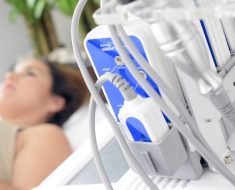The management of bradycardia depends on symptom severity, as bradycardia is often not a dangerous condition and does not require treatment. Bradycardia that is not causing symptoms such as dizziness, weakness or fainting is usually not treated.
Factors that influence whether or not any treatment plan is adopted in cases of bradycardia include:
- Severity of symptoms
- Degree of correlation between bradycardia and its symptoms
- Presence of serious underlying conditions such as heart block
- Presence of potentially reversible causes that may be treated
Treatment outline
Some examples of the types of treatment that may be used to treat bradycardia are listed below.
- In cases of bradycardia caused by medication that slows the heartbeat, the medication is usually discontinued.
- An electrolyte imbalance may need to corrected in cases of bradycardia caused by a low or high potassium level, for example.
- A pacemakers may be implanted to regulate the heart’s rhythm. Pacemakers are tiny devices that generate electrical impulses if they detect an abnormality in the impulses generated by the sino-atrial node in the heart. Pacemakers are implanted under the skin and permanently attached to the heart. When they detect a slow or abnormal heart rhythm, they fire off an impulse that corrects the heart rate.
According to the American College of Cardiology and American Heart Association guidelines, the implantation of a pacemaker is only indicated in certain conditions. These include:
- Third-degree heart block (or atrioventricular block) where heart beats are missed for three or more seconds or the heart rate is below 40 bpm when the patient is awake.
- Third-degree heart block or second-degree Mobitz type heart block with chronic bifascicular and trifascicular block.
- Congenital third-degree heart block with a wide QRS escape rhythm (as seen on ECG), ventricular dysfunction (derangement of the ventricular pumping action), or inappropriate bradycardia for age.
Less commonly accepted indications for the use of pacemakers in bradycardia are referred to as class II recommendations. These include:
- Third-degree heart block with faster escape rates in awake patients and no obvious symptoms.
- Second-degree Mobitz type heart block in patients without bifascicular or trifascicular block.
- Presence of block below or within the bundle of His
The use of a pacemaker is not usually recommended when bradycardia only occurs during sleep, even if the bradycardia is severe. These patients may benefit from pindolol, a beta blocker with intrinsic sympathomimetic activity.
Patients with imminent heart failure or unstable patients with bradycardia need immediate treatment. The drug of choice is usually atropine 0.5–1.0 mg given intravenously at intervals of 3 to 5 minutes, up to a dose of 0.04 mg/kg. Other emergency drugs that may be given include adrenaline (epinephrine) and dopamine.
Sources
- www.anzsnm.org.au/…/ANZSNM_ECG_IntrepretationTraces.pdf
- medicine.ucsf.edu/education/resed/Chiefs_cover_sheets/bradycardia.pdf
- http://austinheart.com/util/documents/HFBradycardia.pdf
- https://secure.muhealth.org/~ed/students/articles/NEJM_342_p703.pdf
- www.blackwellpublishing.com/…/Senecal9781405104555.pdf
- www.uhs.nhs.uk/…/Bradyarrhythmias-patientinformation.pdf
- heartrhythmcharity.org.uk/www/media/files/100414-FINAL-Bradycardia.pdf
Further Reading
- All Bradycardia Content
- What is Bradycardia?
- Infantile Bradycardia
- Bradycardia Causes
Last Updated: Feb 26, 2019

Written by
Dr. Ananya Mandal
Dr. Ananya Mandal is a doctor by profession, lecturer by vocation and a medical writer by passion. She specialized in Clinical Pharmacology after her bachelor's (MBBS). For her, health communication is not just writing complicated reviews for professionals but making medical knowledge understandable and available to the general public as well.
Source: Read Full Article





